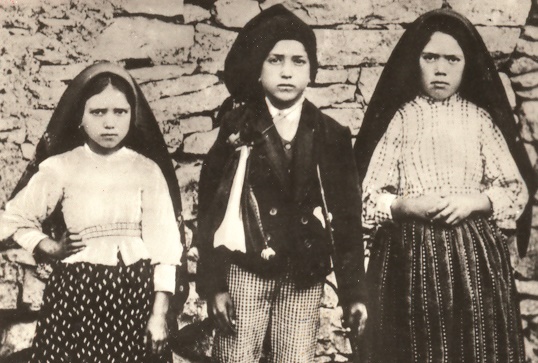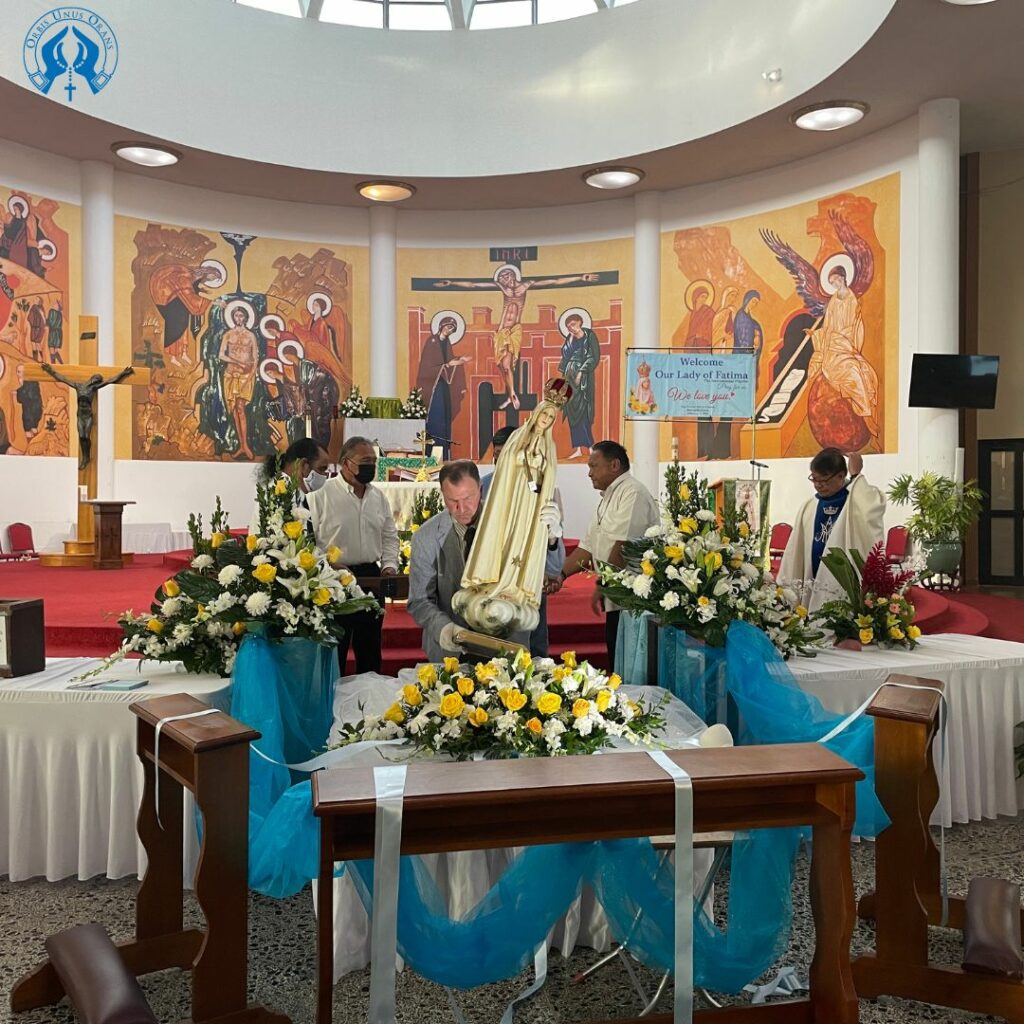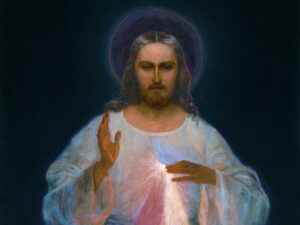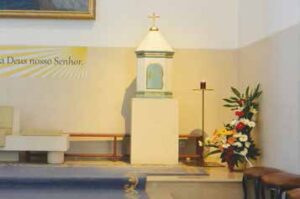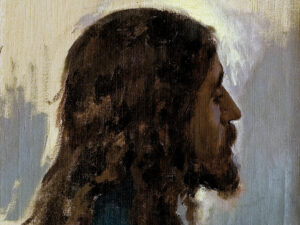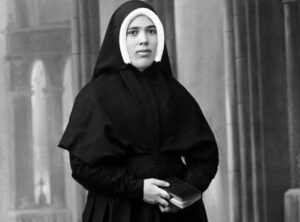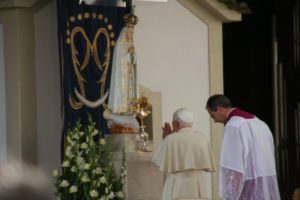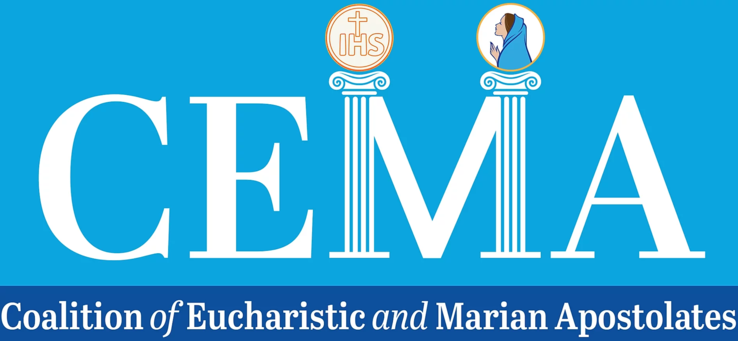by Catherine Moran –
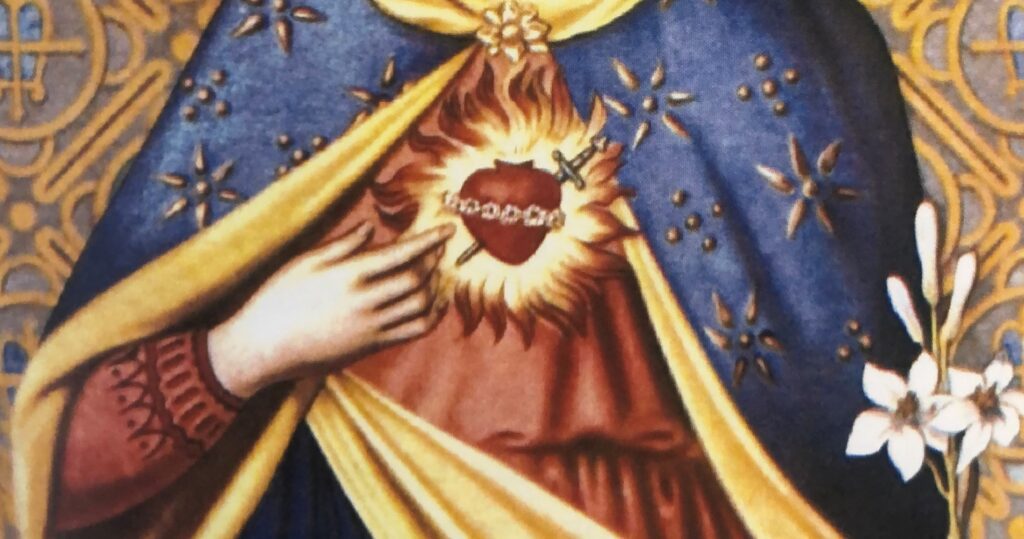

The history of the devotion to the Immaculate Heart of Mary is important to know so that we may understand why Our Lady came to ask for it at the beginning of the 20th century.
In 1732, French Jesuit priest Fr. Joseph de Gallifet, wrote, “Once the devotion to the Sacred Heart of Jesus was established in the Church, it was in the order of Providence a natural consequence that a devotion to the Heart of Mary should also be established. The devotion to the Heart of Mary really is a natural result of devotion to the Sacred Heart of Jesus. …The same love that has led Jesus Christ to associate His Mother with Himself in all the glory He enjoys in the Church Triumphant, has led Him to associate her in the same way in all the honor He receives from the Church Militant.”
Thirteenth-century saints, Mechtilde, Gertrude the Great and Bridget of Sweden, fostered this devotion through their writings and private revelations. Our Lord revealed to St. Mechtilde, in her Book of Special Grace, the reasons why she should honor and salute the Heart of Mary:
- on account of the ardent desires it conceived for the coming of Jesus Christ;
- on account of the love with which it burns and its deep humility;
- on account of its tender love for the Infant Jesus;
- for the care with which it treasured up the words of Jesus; both in His infancy and manhood;
- for its sufferings in the Passion of Christ;
- on account of the prayers it offered up and the desire it formed for the Church;
- on account of the care it takes in heaven to make the Blessed Trinity propitious to us.
Our Lady told St. Bridget of Sweden, “When He suffered, I felt as though my Heart endured the sufferings also…when My Son was scourged and torn with whips, my Heart was scourged and whipped with Him…His Heart was my heart…so that my beloved Son and myself redeemed the world as with one Heart.”
In the 15th century, St. Bernadine of Sienna, publicly preached devotion to the Heart of Mary. So great was his love and writings on the Heart of Mary that he has been given the title, “Doctor of the Immaculate Heart of Mary.”
St. Francis de Sales also wrote on the Heart of Mary. The crest for the Visitation Order that he founded has the two hearts of Jesus and Mary united together. He not only laid the groundwork but was the main force in influencing the apostle of the Immaculate Heart, St. John Eudes (1601-1680). St. John Eudes often publicly acknowledged this fact. St. Pope Pius X called him its father, doctor and apostle. Through him, this devotion was made public and received ecclesiastical approbation. At his canonization, the Church emphasized his role in establishing the liturgical devotion to the Heart of Mary. The feast of the Heart of Mary was established first in his congregation and later throughout France. He composed a Mass and Office. In 1680, shortly before his death, his book The Admirable Heart of Mary, was completed and published. It consisted of 12 books, which took him 20 years to write, and was the first of its kind.
Our Lady said to the Fatima children on July 13, 1917, “I will come and ask for the Communions of Reparation on the First Saturdays.” This request of Our Lady is not a new innovation. In 1892, Pope Leo XIII granted to all the faithful a plenary indulgence to those who devoted 15 consecutive Saturdays in honor of Our Lady of the Rosary. Later, Pope St. Pius X granted a plenary indulgence to all who would perform the 12 First Saturdays in honor of Our Lady, and in 1905, granted a plenary indulgence to those who “spend some time in devout prayers or meditations in honor of the Blessed Virgin Mary Immaculate, on the first Saturday of each month with the intention of persevering in the same practice for the space of 12 months.”
Then on June 13, 1912, Pius X granted new indulgences to the faithful who performed the devotion of reparation to Our Lady on the First Saturdays of the month. The Holy Father wrote, “To the faithful who on the First Saturday of each month perform some special exercise of devotion in honor of the Blessed Virgin Mary Immaculate, in order to make atonement for the blasphemies whereby the name and prerogatives of the same Blessed Virgin are reviled, may gain a plenary indulgence” on the condition of confession, Holy Communion and prayers for the Pope.
Prior to the publication of the Fatima revelations, Pope Benedict XV added to Pius X’s declaration, “a plenary indulgence at the hour of death, if after confession and Communion, or at least being duly contrite, they invoke with their lips if possible, otherwise in their hearts, the most holy Name of Jesus, and accept death with resignation from the hand of God as the due punishment for their sins on the condition of making the devotion on eight successive first Saturdays.”
One can certainly see the similarity of these grants of indulgence to the promises attributed to Our Lady at Fatima. She ratified the acts of Pius X, when five years to the day – on June 13, 1917 – Our Lady showed the three children her Immaculate Heart, “surrounded by thorns that seemed to pierce it,” which not only gave us the reason for this reparation but demanded it.
On Dec. 10, 1925, when Lucia was a postulant in Pontevedra, Spain, Our Lady and the Child Jesus appeared to her. Lucia describes the encounter, “…suddenly my room lit up and it was the light of my dear Mother in Heaven who came with the Child Jesus on a luminous cloud. Our Lady, as if wanting to instill courage, rested her hand on my shoulder, and as she did so, showed me her Immaculate Heart encircled by thorns, which she was holding in her other hand. The Child Jesus said: ‘Have compassion on the Heart of your most holy Mother, covered with thorns with which ungrateful men pierce it at every moment, and there is no one to make an act of reparation to remove them.’
“Then Our Lady said, ‘Look, my daughter, at my Heart, surrounded with thorns with which ungrateful men pierce me at every moment by their blasphemies and ingratitude. You at least try to console me and announce that I promise to assist at the moment of death, with all the graces necessary for salvation, all those who on the first Saturday of five consecutive months shall confess, receive Holy Communion, recite five decades of the Rosary and keep me company for 15 minutes while meditating on the mysteries of the Rosary, with the intention of making reparation to my Immaculate Heart.”
When Our Heavenly Mother called for the First Saturdays of Reparation, she took a traditional devotion, simplified it and gave it a greater efficacy.
Our Lady has asked for reparation, but what does it mean? Reparation consists of making amends to God for our sins and those of others by prayer and penance. When we make reparation for the sins of others, this is called ‘vicarious satisfaction.’ It is atonement made for an offense not by the person who committed the offense, but by someone else on their behalf. This is the crux of the Fatima message…to save souls!
Cardinal Larrona, the papal legate to Pope St. John XXIII, said at Fatima on May 13, 1962, “It is urgent for us to establish in the world devotion to the Immaculate Heart of Mary. God wishes it! Our Lady told us! Our efforts must therefore multiply; we must be assiduous in practicing the First Five Saturdays of Reparation, not just once, but continually, for those who do not or will not heed Our Lady’s plea!”


Catherine Moran is the president of the World Apostolate of Fatima Byzantine division of the Eparchy of Parma, Ohio, an author, speaker and regular contributor to Soul Magazine and the Fatima blog.


